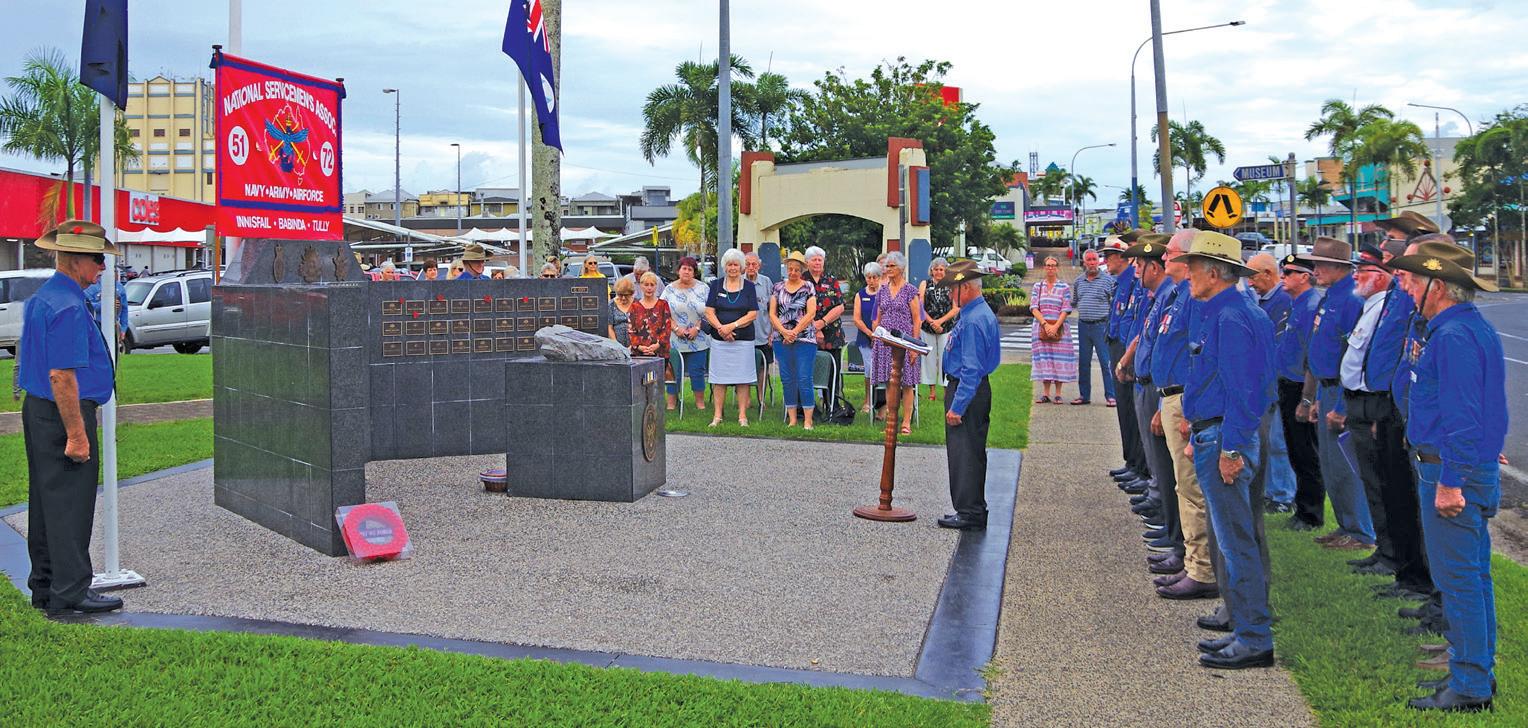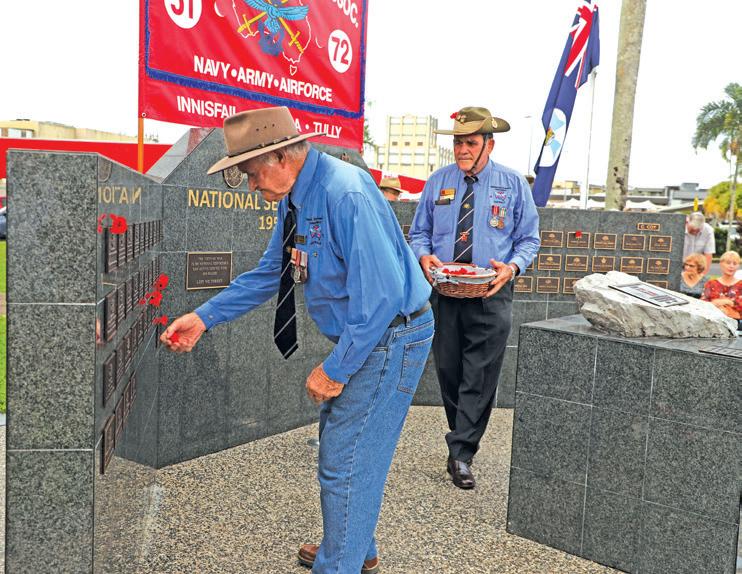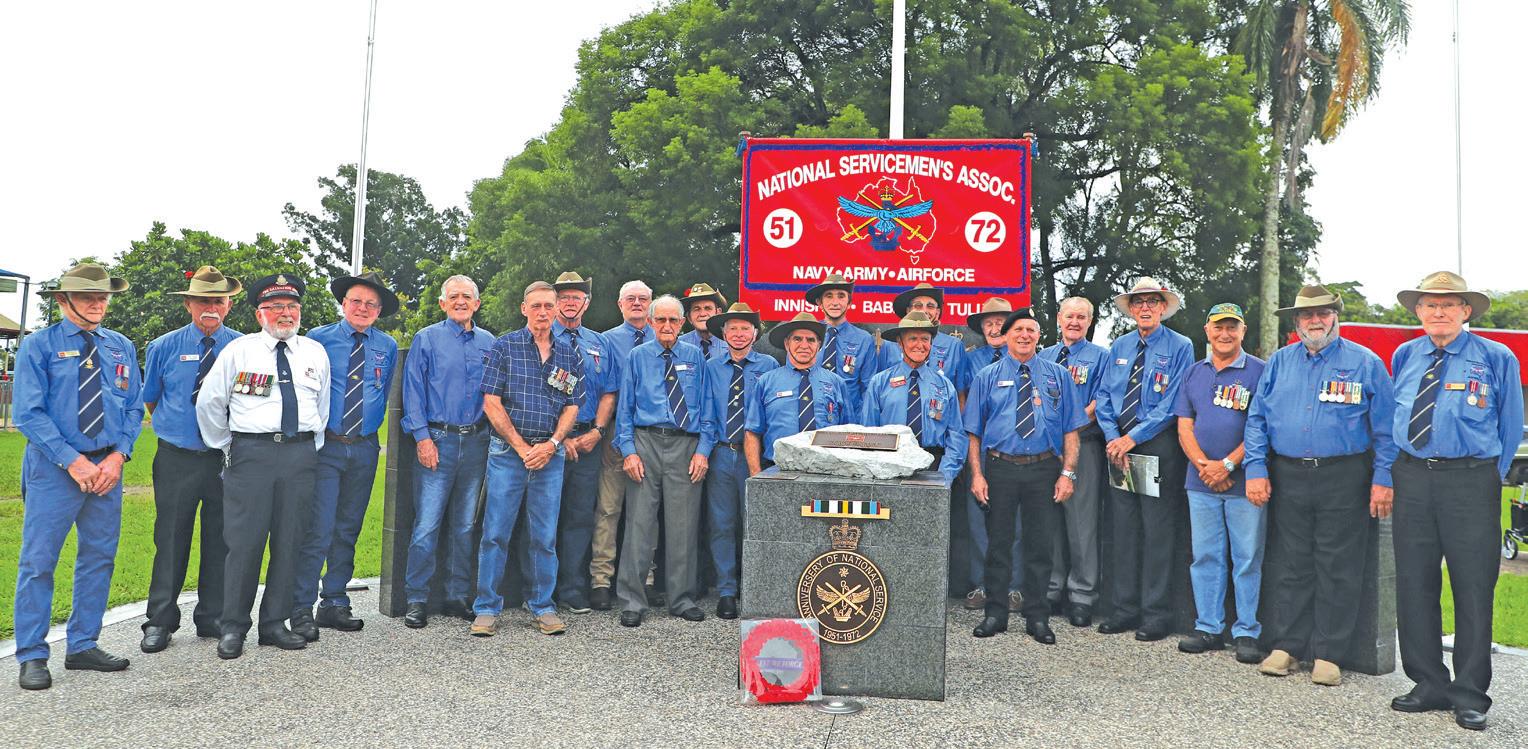
1 minute read
Fallen comrades remembered on National Servicemen's Day
STORY AND PHOTOS BY MARIA GIRGENTI
WHILST February 14 (Valentine's Day) is traditionally a day of love and romance for couples, it is also one of great significance for National Servicemen throughout Australia.
Advertisement
Last Tuesday, National Servicemen from Innisfail/Babinda/Tully and Tableland branches, their partners and supporters gathered for a memorial ceremony at King George Park, Innisfail, to honour their fallen.
The newly elected Labour Government abolished National Service conscription on December 5, 1972.
National Servicemen's Day recognises the last day Australian Nashos marched out of camp in 1974.

The National Servicemen's Association, which has branches throughout Australia, is the secondlargest ex-service organisation after the RSL.
Since Federation, Australia has had four National Service schemes. Although the first scheme started in 1911, records indicate it may have been as early as 1904.
Australia's second Prime Minister, Alfred Deakin, introduced the first compulsory military scheme, which saw men aged 14 - 26 years conscripted as School Cadets or in the Citizens' Military Forces (CMF). This scheme ended in 1929.
In 1940, Prime Minister Robert Menzies re-introduced the CMF. All unmarried men aged 21 years conscripted in the second scheme did up to three months of army training. This occurred during World War II, and these men could only serve in Australia or Papua New Guinea.
The third National Service scheme ran from 1951 - 1959, and eligible men aged 18 years called up completed three months of full-time army training.
In late 1964, saw National Service was re-introduced due to the conflicts in Vietnam. The selection was via birthday ballot, and if called up, men had to complete two years of full-time army service.
A total of 287,000 young Australian men did compulsory training in the Navy, Army and Air Force between 1951 - 1972.
Under the second scheme (19651972), 212 died on active service in Borneo and Vietnam, with more than 1,200 wounded.
When called up in the second scheme, 35,000 men chose to undertake the Alternative Service option in the CMF.
In 1987, Barry Vicary, a 1965 Nasho and Vietnam veteran, founded the National Servicemen's Association of Australia in Toowoomba to seek a better deal for Nashos and for them to receive a medal in recognition of their service.

The Australian government recognised the vital contribution of








